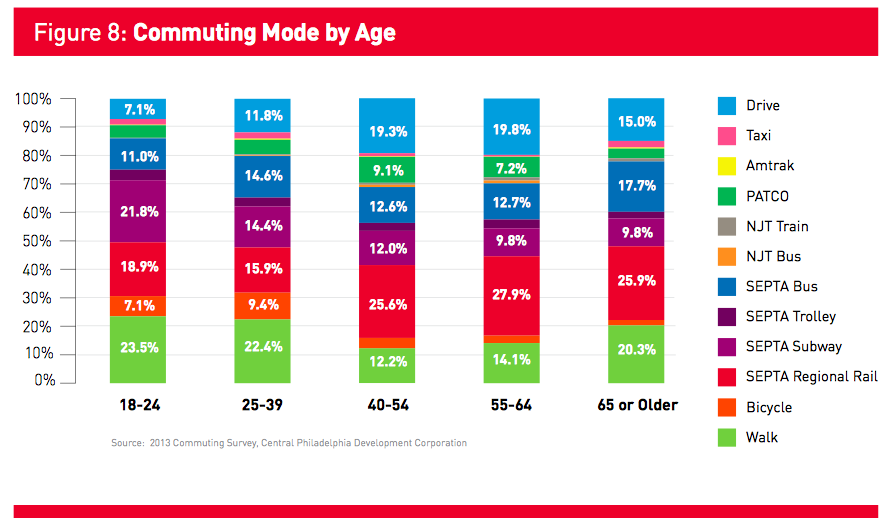SEPTA Ridership Was Down in 2014—Are Millennials to Blame?
After record-breaking ridership on SEPTA in 2013, fewer Philadelphians took public transit last year, according to a new report from the American Public Transportation Association (APTA). The system maintained its status as the 6th-most travelled metro system, but transit trips were down about 7 million in total, or, about 2 percent on the year. Nationwide, passengers on public transportation increased by 1 percent in 2014 (barely outpacing U.S. population growth), contributing to 10.8 billion rides, the highest total mark in 58 years.
SEPTA isn’t the only big-city transit system to post a ridership decline. Commutes were down in both Chicago and Washington, D.C.—the second- and fifth-largest systems—along with smaller systems in Los Angeles, Miami and Pittsburgh. Actually, ridership was essentially flat across much of the country. One huge exception? New York.
101 m more total transit trips in 2014 than 2013. 107 m more NYC Subway trips. So other cities accounted for virtually none of the change.
— Yonah Freemark (@yfreemark) March 9, 2015
The national bump in riders continues a trend that’s now 20 years strong. Transit ridership has increased 39 percent over that span, while vehicle miles have increased just 25 percent. And last year, ridership increased even during a fall and winter in which gasoline prices hit 5-year lows in many parts of the country. It’s also an encouraging sign for the economy, APTA says:
For example, Atlanta (GA), San Francisco (CA), Minneapolis (MN), Seattle (WA), and Champaign-Urbana (IL) were some cities that saw increased ridership in part because of an improved job market. Since nearly 60 percent of the trips taken on public transportation are for work commutes, public transportation ridership increases are seen in areas where the local economy is growing
Overall, light rail saw the highest proportional gains compared to any other mode of transit, while bus passengers fell the most. In Philly, both light rail (trolleys) and buses were down—4 percent and 3 percent respectively—while the commuter rail continued to gain riders (about 2 percent).
SEPTA’s own ridership tally, released last year, covers a different 12-month window than does APTA’s, but it too found that ridership had declined a bit. What’s going on? Last year, SEPTA blamed a harsh winter and the fare increase in the summer of 2013 (which took effect at the start of its measurement) for the declines.
But could changing transportation preferences among Millennials also be a factor? Philadelphians aged 18-34 commute on foot or by bike much more than other adults, and via public transportation much less, according to a Center City District report. Young people have led the increase of bike commuting into Center City, which has grown 33.4 percent between 2012 and 2014. Center City District hasn’t been doing its commuting survey all that long, so it’s not entirely clear if Millennials are less transit dependent than earlier generations of young people but it seems a fair bet, given Center City’s youth movement these past 10 years or so.
But there’s good news for SEPTA ridership in the more recent data. The system reports that, over the first seven months of its fiscal year, ridership is up 1.3 percent over last year. Intriguingly, though, that growth is predominantly being driven by Regional Rail (up 3.8 percent over last year) and SEPTA’s suburban transit division (up 3.2 percent). The city transit division is up a scant .6 percent.

